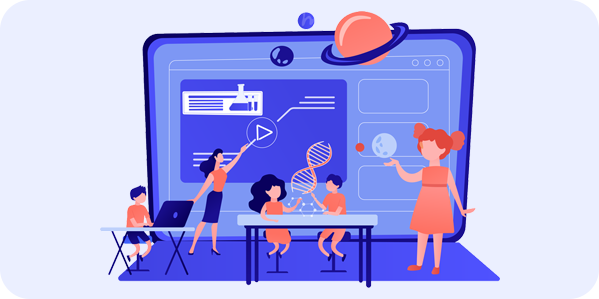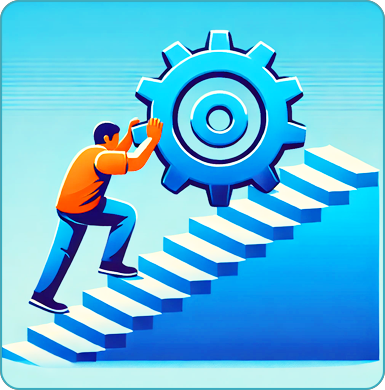Instructional Design
Why instructional design?
Plan and make learning activities on the computer or tablet to have a great time while learning important stuff. People who do this job think about what you need to learn how to make it fun and easy to understand, and how to make sure you remember what you learned.

What are chronic problems with e-learning?

Lack of Engagement
Long blocks of plain text or lectures can cause learners to tune out. Interactive elements help sustain interest.

Difficulty In Applying Knowledge
Passive learning does not allow practice applying concepts. Interactive scenarios, simulations, and problem-solving build skills.

Expensive Trainings
Engaging, in-person training is expensive. Delivering it to all learning styles at the same time is challenging.
How can you build a solution that addresses your needs?
1. Content Analysis
Analyzing existing content and defining learning objective

2. Storyboard
Building a storyboard based on the requirements received

3. Design and Development
Building the course based on the storyboard
4. Test and Revise
Course dry-run, making revisions as necessary
5. Deployment
Deploying course content in production
Impact
Enhanced Engagement
Interactive design often increases learner engagement. Engaged learners are more likely to complete courses and retain the information presented, leading to better educational outcomes.
Adaptive Learning
Interactive design can enable real-time adjustments to the learning path, providing more personalized learning experiences. This can be highly effective in addressing individual learners’ needs.
Data Collection and Analysis
Interactivity allows platforms to collect granular data on how users interact with the course material. This data can be analyzed to improve course design and tailor future learning experiences.
Skill Building
Simulations, scenarios, and interactive exercises allow learners to apply knowledge in a safe, controlled environment, promoting skill development and retention.